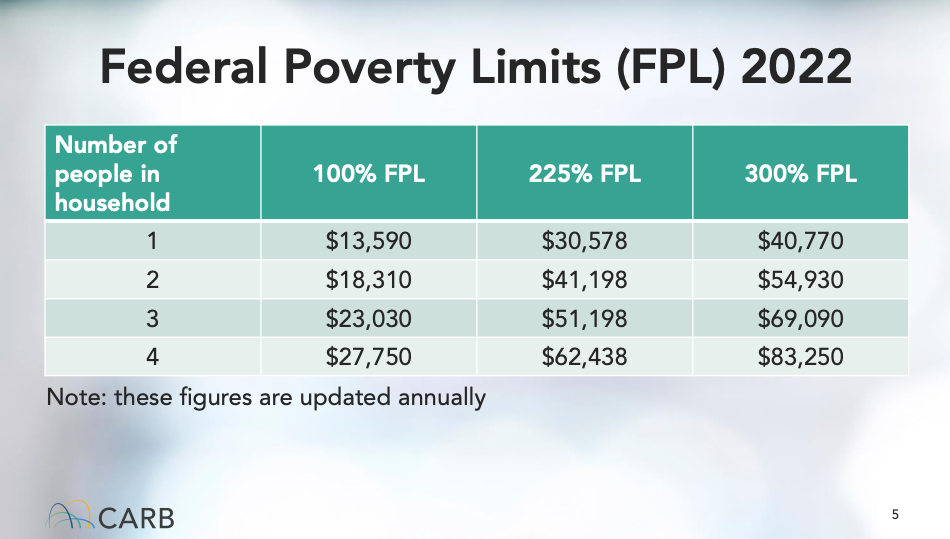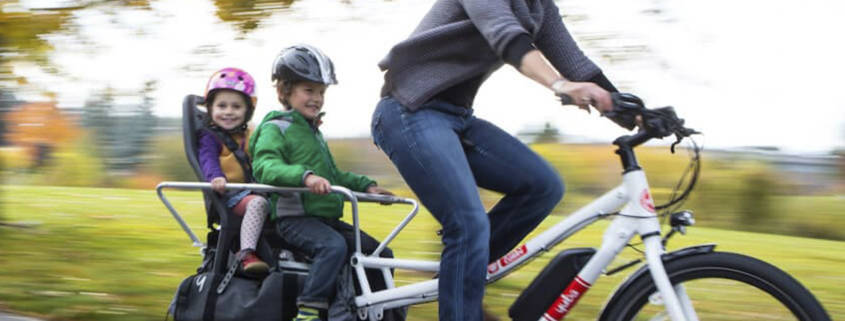Electric Bicycle Incentive Work Group Meeting Report: 1/31/23
The meeting of the California Air Resources Board (CARB) Electric Bicycle Incentives Project work group on January 31, 2023, provided more information about program parameters and a robust discussion of details still being formulated. Here’s what you need to know.
California’s statewide e-bike program begins to take shape
Over the past few work group meetings, with excellent input from the public (including many of you), CARB has settled on these parameters for the e-bike incentive program:
- To qualify, participants can make no more than 300% of the federal poverty level (FPL).
- The base incentive will be $1,000.
- Participants can get an additional $750 toward the purchase of a cargo bike or adaptive bike.
- People whose income is below 225% of FPL or who live in a disadvantaged community can qualify for an additional $250, so the maximum incentive amount is $2,000.
- Incentives can be applied toward sales tax, as well as the purchase price.
- Incentives will be applied at the point of sale.
- All three classes of e-bikes can qualify for incentives.
- Used bikes will not be eligible.
- Incentives can be used to buy e-bikes from local bike shops or online retailers with a business location in California.
- Adaptive bikes can include tricycles. CARB plans to keep the definition of adaptive e-bikes as broad as possible.
The incentives will be first-come-first-served but with a hybrid model that reserves at least 50% of funding for priority applicants (those under 225% FPL or living in disadvantaged communities).
We also learned that the launch date, scheduled for Q1 of 2023, will be delayed until the second quarter, so look for the application window to open in April or later (no date set yet).
There will be another work group meeting, probably in March. We will give you more specific information about launch dates as soon as we have it.

E-bike options still to be determined
The work group participants had a lot to say about the quality of e-bikes. Some are concerned that, if they buy one of the least expensive models available, the bike might break down, it might be hard to get parts to service it, and there might be an increased chance of battery fires. Several people expressed concerns about risks from improperly charging batteries.
CARB indicated an openness to allowing participants to use a portion of their incentives for gear such as helmets and locks, if the cost of the bike is less than the full incentive amount. Also, after discussion at the prior work group, the agency proposed requiring a minimum one-year warranty on electrical parts. The previous proposal had been two years, which would have disqualified some of the more affordable makes of e-bikes.
A CARB proposal that eligible bikes come with front and rear lights installed was not controversial. But requiring bikes to be assembled by the manufacturer at the manufacturer’s expense was hotly debated. Assembly is standard when buying bikes through a local retailer, but many e-bikes ordered online come with some assembly required. The program needs to balance the concern that people might get a bike they aren’t able to assemble against the need to include online retailers in the program and the fact that some communities don’t have a nearby bike shop.
People at the meeting expressed concern about education and training for participants, which will be discussed at a future work group. Other possible program parameters include priority for applicants with disabilities and a follow-up program to provide repair services to keep the bikes in good working condition.
As always, CalBike will continue to follow the development of this program and give you all the latest information. If you’re not already on our e-bike mailing list, you can sign up below.





